1230 Freight wagons & Cornish wheels
Wagon Road North: The Saga of the Cariboo Gold Rush
by Art Downs, edited by Ken Mather
Victoria: Heritage House, 2021 (revised and expanded edition; first published 1960)
$26.95 / 9781772033601
Reviewed by Robin Fisher
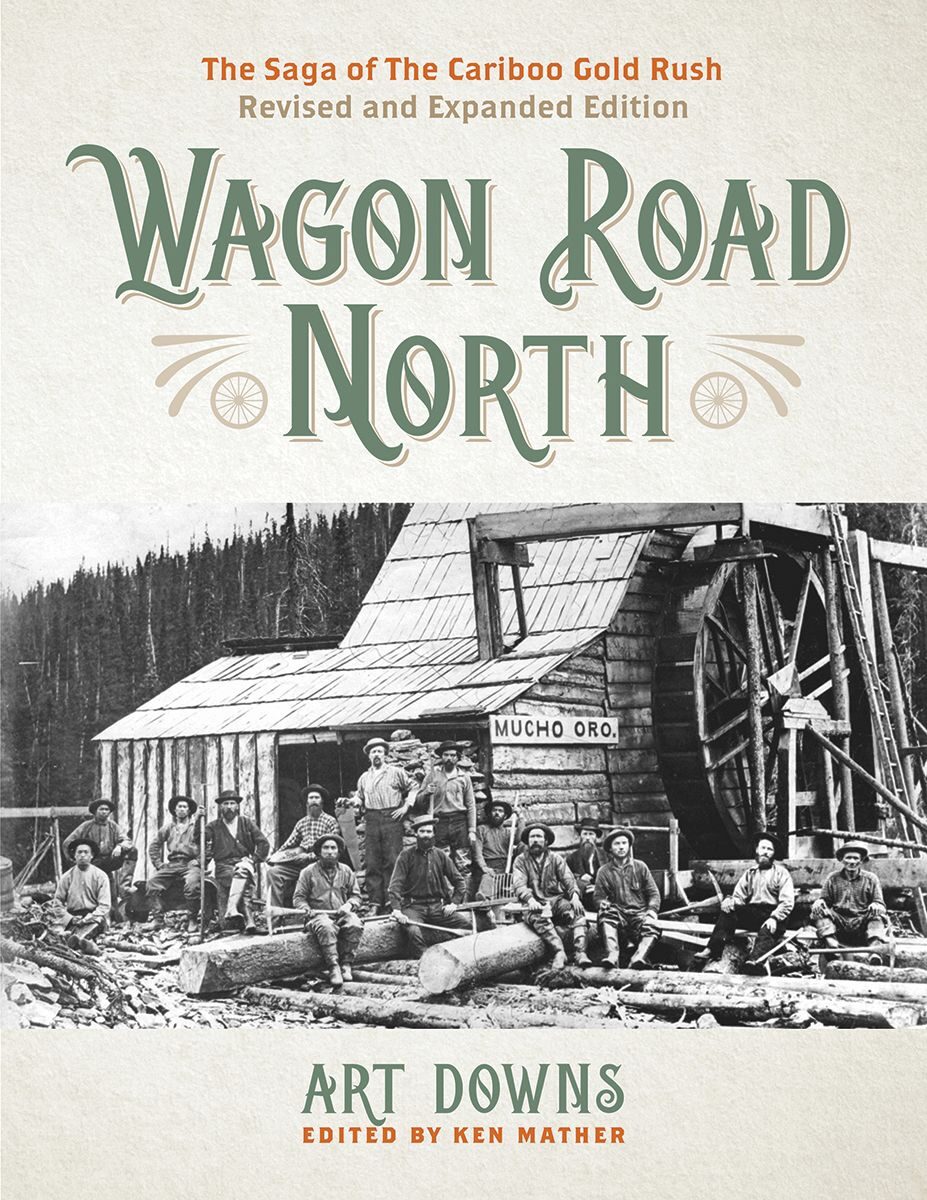 *
*
The cover of this book features an iconic gold rush photo. It is worth a thousand words, and yet it does not tell the whole story. What we see is a substantial log building with a plank roof that has a Cornish water wheel beside it. In front of the building, there is an all-male cast of fifteen miners who are sitting or standing in fixed positions so that they can be captured by the camera’s slow exposure speed. As is typical of photographs from mid nineteenth century British Columbia, no one is smiling. The look on the miners’ faces is grim, or perhaps resolute. Many of them are holding the tools of their trade – pitchforks, picks, axes and saws. A few are Chinese indicating that men from different cultures worked together on mining crews. They have all paused from their backbreaking work to strike a pose for the photographer. In front of them is what could be the beginning of skid road, suggesting a connection with the rest of the Cariboo and beyond. Behind, on the wall of the building, is sign proclaiming the name of the mining claim — Mucho Oro.
What we do not see, as with any photograph, is the wider context of space and time. Later in the book (p. 62) we learn that the photograph was taken by Frederick Dally who briefly had a studio in Barkerville and took several iconic pictures. While the photo took time to arrange and shoot, it is still a snapshot, frozen in the moment. A map of the old Williams Creek mining claims (pp. 32- 33) indicates that Mucho Oro was located on Stout’s Gulch that was a little way up from Barkerville on the road to Richfield. There were thousands of claims in the area at the height of the rush. Though there is forest in the background of this photo, gold mining was so intensive around Barkerville that much of the landscape was stripped bare. The building in the photo houses the mineshaft that was dug for deep underground placer mining and the water wheel powered a pump that kept the shaft dry and brought the ore to the surface. Mining was nevertheless hard, physical work for these men and, like many miners, were driven by hope rather than reality. For Mucho Oro was never a high producing operation.

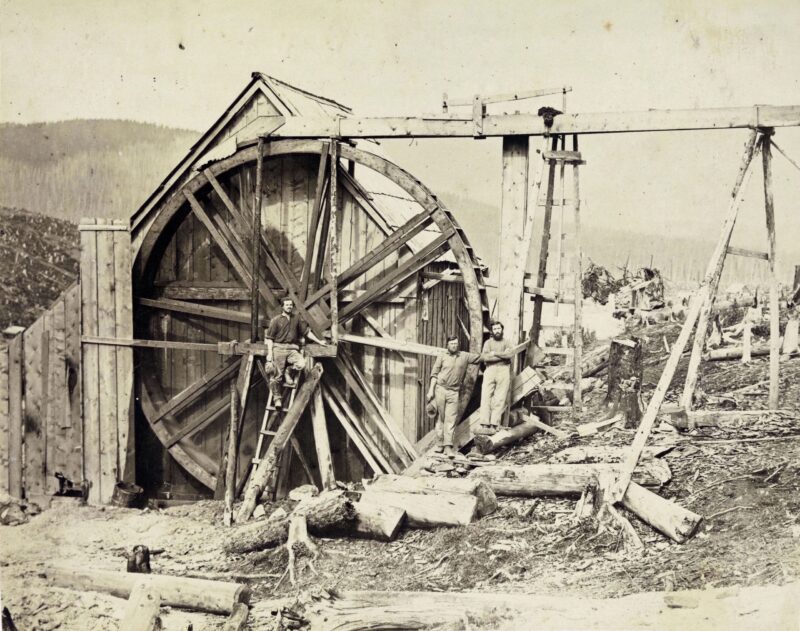
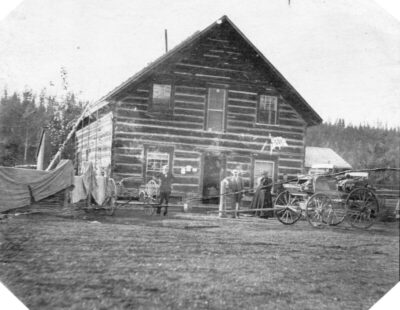
Wagon Road North is a history of the Cariboo gold rush of the 1860s and after, using photographs as the primary source. The images are vivid and immediate. Like most historic documents, they both reveal and conceal. There are images of the wagon road itself and terrain that it covered, the means of transportation — pack trains, wagons and stage coaches – and the road houses that were dotted at regular intervals along the route of the Cariboo Road. There are wonderful pictures of the gold rush communities and the mining operations that brought them to life. And there are portrait photographs of some of the major players in the drama of the gold rush: Billy Barker, Cariboo Cameron, Edward Stout, and Judge Matthew Baillie Begbie among others.
The images of people are often studio photographs while, with few exceptions, all the other photos are taken outside where the photographer could get enough natural light to capture an image on a glass plate. The roadhouse photos, for example, are views of the buildings often with horses, wagons, or stage coaches in front ready to travel and men leaning against veranda posts. The scenes are bucolic and mannered, but what was it like inside the roadhouses? Reports from the day indicate that there was a great variety of service, meals, and sleeping accommodation. With dozens of travellers competing for limited space, it could get pretty hectic. In a Freudian typo, Cottonwood House, between Quesnel and Barkerville, is referred to as “one of the best known madhouses on the Cariboo Wagon Road” (p. 145). Perhaps at times it was exactly that.
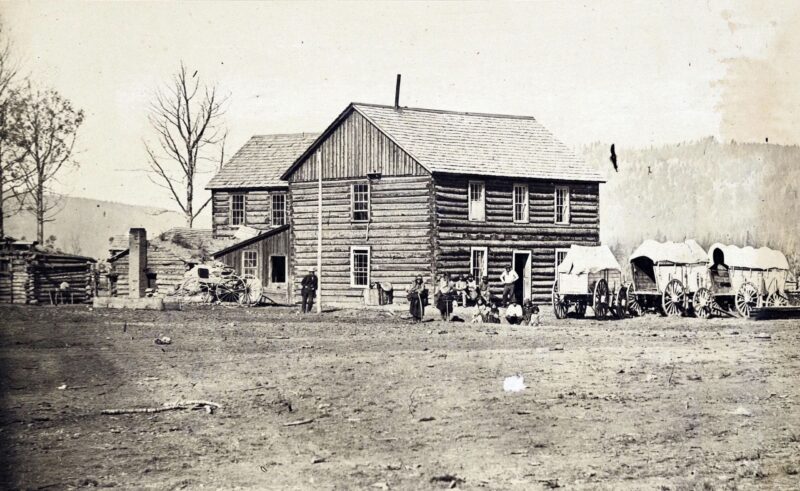
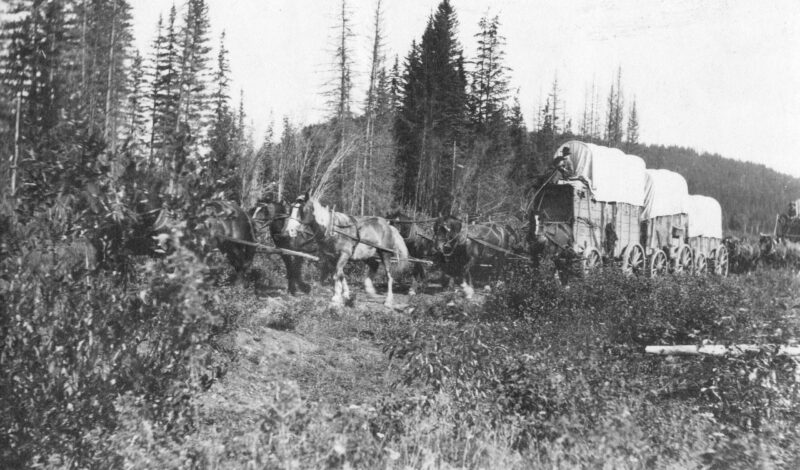
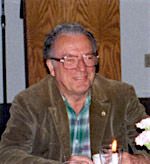
At the end of the book, the historic photographs are supplemented with a section of coloured photographs mostly of wagon road buildings that have survived. They remind us that the history is still there in the landscape. The photos are accompanied with a text that outlines the history of the Cariboo gold rush and often extended captions that explain the images.
Wagon Road North is the latest version of a book that itself has a long history. Written by Art Downs, it was first published in 1960 out of Quesnel. Downs was a passionate advocate for the history and ecology of the Cariboo and wanted to present the history in a way that would make it accessible to anyone with an interest. And he was successful. Wagon Road North has been published many, many times since that first edition. After 1969 it was published by Downs’ own publishing company: Heritage House. At first there were straight reprints and then many of the new editions were revised and expanded as is this 2021 edition, edited by Ken Mather.

The layout of this edition, at least to my eye, is much more attractive than the earlier ones. The images are enhanced because there is more space between them. A few photos are too small to easily pick out details referred to in the captions, but overall the book is very well designed. Mather worked for a time as Interpretation and Education Coordinator at Barkerville Historic Town and there is a somewhat greater emphasis on the goldfields themselves as opposed to the road that took the miners the diggings. He has also added sections on people who were largely left out of earlier editions. The diversity of Cariboo society is highlighted; the important contributions that First Nations, women, and Chinese made to gold rush society and economy are all covered in greater detail.

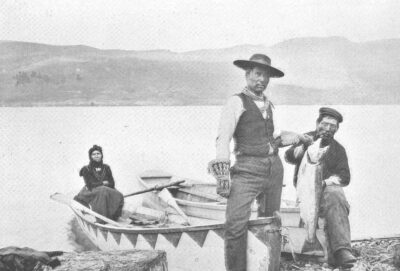
It might be argued that the gold rush was the heroic period in British Columbia history. That it was largely about the doings of men overcoming adversity, wanting to improve their circumstances and laying the foundation of the Province. At the same time there were also negative connotations and consequences. In the preface to this latest edition of Wagon Road North, Ken Mather acknowledges the impact that that post-fur trade colonisation had on the Indigenous people of the Province and that the “trigger of this force was gold” (p. 8). First Nations people were present and engaging with the new economy during the Cariboo rush, but they were also being dispossessed of their land and cultures. Towards the end of the book Mather retains a sentence from earlier editions that is now more contentious. “Every person in British Columbia enjoys a better life today because of events which took place in the Cariboo over a century ago” (p. 145). Such a positive picture of the past seems to fade away these days as the media, aided and abetted by some historians, seem only able to develop the dark negatives of history. And yet the continued popularity over the years of Wagon Road North suggests that there is an appetite for a more balanced likeness of the past. The book is also a reminder of the importance and distinction of the North in a province dominated by southern cities and perspectives.
So, if you think that there is still something to be celebrated in the mixed history of British Columbia, then read, or re-read, this new edition of Wagon Road North.
The book’s photographs, with their sharp images of lives lived, present a view of the past as it was, rather than what we, in the present, would like to make it out to be. Take in these images both for what they say and the questions that they raise.
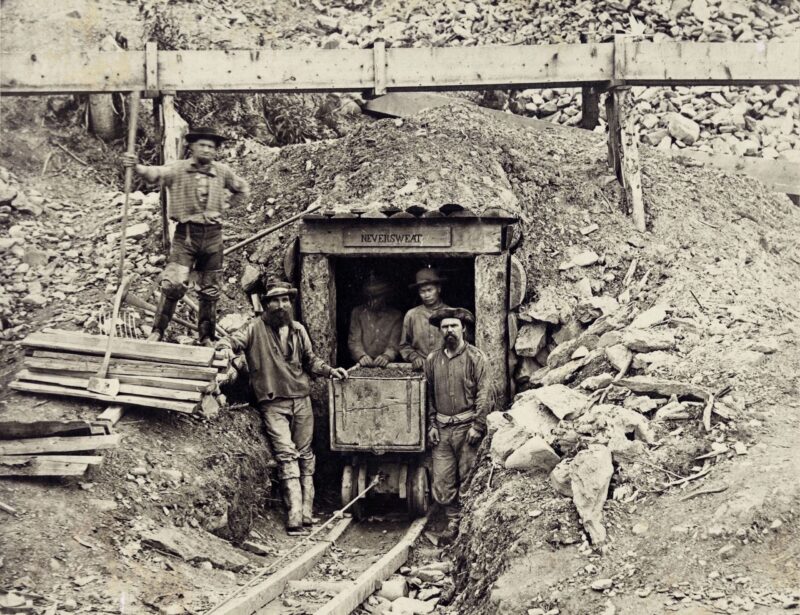
*

Robin Fisher taught and wrote history as a faculty member at Simon Fraser University before he moved in to university administration and contributed to the establishment of two new universities: the University of Northern British Columbia in Prince George and Mount Royal University in Calgary. When he was at UNBC he developed and taught a course on the history of the Cariboo that was delivered in Barkerville Historic Town. His books include Contact and Conflict: Indian-European Relations in British Columbia, 1774-1890 (UBC Press, 1977; second edition, 1992) and Duff Pattullo of British Columbia (University of Toronto Press, 1991). He has now written a biography, Wilson Duff: Coming Back — A Life, that is forthcoming with Harbour Publishing. Editor’s note: Robin Fisher has reviewed books by Richard Boyer, William Frame & Laura Walker, and Michael Layland for The Ormsby Review, and contributed an essay in May 2021,“The Noise of Time” and the Removal of History?
*
The Ormsby Review. More Books. More Reviews. More Often.
Publisher and Editor: Richard Mackie
The Ormsby Review is a journal service for in-depth coverage of B.C. books and authors. The Advisory Board consists of Jean Barman, Wade Davis, Robin Fisher, Cole Harris, Hugh Johnston, Kathy Mezei, Patricia Roy, Maria Tippett, and Graeme Wynn. Scholarly Patron: SFU Graduate Liberal Studies. Honorary Patron: Yosef Wosk. Provincial Government Patron since September 2018: Creative BC
“Only connect.” – E.M. Forster
4 comments on “1230 Freight wagons & Cornish wheels”